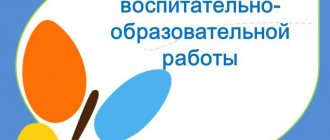Learning by playing
The children's day in the nursery is scheduled minute by minute, and children's entertainment is aimed at learning and general development. Agree that not every family can do this. Modeling and drawing, dancing, physical education and even music are not the entire list of subjects in the general developmental program for young children. We hasten to prevent questions about how to get capricious fidgets to study - experienced educators know that games and a fun atmosphere work wonders.
The main rule of educational games according to “adult” rules is that they should be interesting to the child. A relaxed atmosphere and genuine interest from an adult facilitate the child’s learning and development. A significant part of the classes is devoted to the development of sensory abilities; the child learns to determine the color, shape and size of the objects around him. This knowledge is used in further classes.
Another important component of classes in the nursery group is that the baby learns to combine objects according to their individual properties . Such exercises develop not only mental abilities, but also fine motor skills of the baby. The popular mosaic game in nurseries also pursues similar goals - children put in and take out objects, developing hand movements.
Parents' opinion
We conducted a survey among parents whose children attend nurseries and asked them to tell us what activities are offered in the nurseries.
Ekaterina: – In the nursery there are lessons on familiarization with the outside world, modeling, drawing, design, appliqué, music, physical education, speech development, introduction to basic knowledge in mathematics and much more.
Yulia Kireeva: – In the nursery, children are taught to a minimum. This is rather an adaptation period to kindergarten. In general, it largely depends on the person – the teacher. I have met super responsible teachers who worked with children on development, and those who spent hours in the smoking room with breaks for lunch.
Anna Pipchenko: – We have a lot of activities in the nursery: dancing, modeling, drawing, developing group play skills, speech development, design, physical education.
Panda: – We have two nursery groups in the garden from 2 to 3 years old. Where my daughter went, they only read books, and only started going out in late spring! The youngest son went to the same kindergarten, but to a different nursery group, here they always walk and do activities - they sculpt from plasticine, paint, show the children finger theater, read books and much more. It turns out that everything depends on the teacher who leads the group. Sending your child to a good group is success!
Games and activities to develop sensorimotor skills
What's new at this age:
- We open and close boxes with different closing/latching options;
- We learn to open and close locks, latches, etc.;
An example of a board with locks (My-shop, KoroBoom) or a busy board
- We look for identical beans, pasta, etc. and arrange them into cells;
- We sort objects (by size, color, shape)
- We sort the beads by color into different bowls;
- Playing with water;
- Sift the cereal through a strainer;
- We assemble puzzles from 2 parts;
Example of a simple puzzle (KoroBoom, Labyrinth, My-shop)
- We cut vegetables and fruits;
Example of a set of vegetables (KoroBoom, My-shop, Labyrinth)
- We assemble the pyramid by selecting a ring of suitable size;
- We assemble the nesting doll by selecting the half ourselves;
- We play lotto;
- Picking mushrooms/berries;
- We dress the dolls by putting on clothes;
Examples of kits for dressing dolls (Ozon, My-shop, KoroBoom)
Already familiar games:
- We arrange small objects into cells;
- We master instrumental actions (pour sand into a bucket with a scoop, knock with a hammer (play with a knocker), remove toys from water or from containers using a spoon, ladle, etc.);
- We play with the simplest insert frames (with an image of the inserted object in the background);
Example of an insert frame (Ozon, My-shop, Read)
- We play with the caps (we stack them sequentially, make pyramids, compare by size);
Example of caps (Ozon, My-shop, Read). A similar game principle is wooden rainbow.
- We roll the car along roads, hills, with a load;
- We tear paper/cotton wool;
- We play with cereals, sand, water (pour from one container to another, pour using a jug, scoop it into the palm of your hand, “salt” it with sand scooped into a pinch, etc.);
- We learn to push objects (into a piggy bank, into a hole in a box, into a plastic bottle, into a colander, into a sorter);
- Playing with lacing;
Lacing example (KoroBoom, Labyrinth, My-shop)
- Roll the ball/ball along the slide/grooves;
An example of a bowling alley (Ozon, Labyrinth, My-shop)
- We carry a gurney;
- Peel the boiled egg;
- We tear off the pieces of tape glued to the cube;
- Unwrap items wrapped in foil;
- We learn to unfasten Velcro, zippers, unscrew and tighten bottle caps;
DIY educational mat
Book “I dress myself” (Ozone, Labyrinth, My-shop)
Board with fasteners (My-shop, KoroBoom)
- Transfer the beans from one bowl to another;
- We string small rings onto the pyramid;
Example of pyramids (Ozon, Labyrinth, KoroBoom)
- We build towers from cubes;
- We play with small objects (take them out of the sensory box, put them in a jar);
- Playing with sensory boxes;
First lessons
- We consolidate the concepts: big-small, many-little, identical;
- Learning colors;
- We study opposites on real objects (cold-hot, empty-full, heavy-light, soft-hard);
- We count everything around while communicating with the baby (steps, buttons, toys);
- We study geometric shapes;
- Viewing Doman cards or other educational material that expands your child’s horizons


